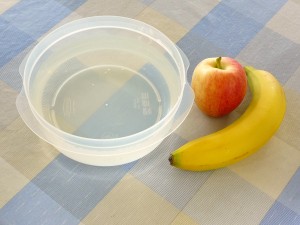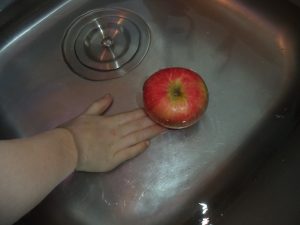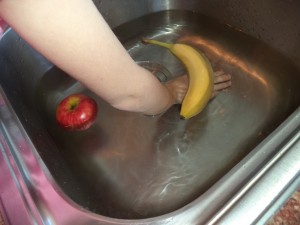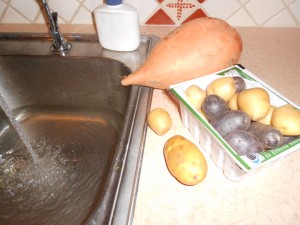You may have done this apple science fall fun experiment before but kids like to ask and do the same thing over and over again. Have you noticed? Get out an apple, fun some water in the sink or a bowl, and here we go.

Science experiments start with wanting to know. In this case, we want to find out if an apple will float or if it will sink when we put it in water. Ask your child what s/he thinks will happen. Sometimes, the reply is “I don’t know,” but we don’t need to know first. That’s why we’re doing an experiment. This is thinking what might happen. The apple will float on the top or sink to the bottom. It won’t grow legs. It won’t sing a song. Float or sink. If you remember from your science days, this is called the hypothesis. Once kids say one or the other, go to the next step.

Make sure there is enough water in either the sink or the bowl so the apple doesn’t just sit on the bottom. The more water, the better for splashing, of course. Now, kids can gently lower the apple into the water and watch. Did the apple float? Did it sink? Were you surprised?
Even after doing this a dozen times, it’s still exciting. To add to the fun, kids can turn the apple upside down. What might happen this time? Will it still float? After guessing, put an apple in the water upside down, that is with the stem on the bottom. We’ve found some apples stay floating that way but others turn over immediately and the stem points upwards again.

It’s fun to try other fruits and veggies, like carrots, potatoes, grapes, strawberries, bananas, oranges, and peppers. Here’s a question for the adults: are peppers a fruit or a vegetable? The part of a plant that has seeds is the fruit. If peppers are fruit, what’s a tomato? It has seeds so it’s a fruit too.

One benefit of this apple science fall fun experiment is the fruits and veggies get washed. And maybe the kitchen floor from wiping up the water. Does this fun and learning float your boat, that is to say, your apple?
